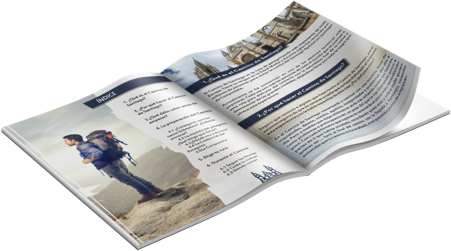This is the essential practical documentation that we offer you for your Camino de Santiago.
What to take in your backpack
If it is your first time on the Camino de Santiago, it is normal that you do not have a clear vision of those things that are really essential to carry out this adventure, or on the contrary you make the mistake of filling your backpack with many other things that are totally dispensable.
Therefore, depending on the route you choose, as well as other characteristics such as the time of the year or even personal needs, we will send you a detailed list to prepare your pilgrim’s luggage so that you don’t forget anything.
How to get to the start of the route
Once we have decided the route we are going to do, we have to move to the starting point, something that sometimes is not easy at all.
Most of the trips start from small towns or even villages, where communications are neither frequent nor direct, sometimes even non-existent.
Depending on whether you are coming from one country or another, from Andalusia, Madrid, Catalonia, Valencia or any other autonomous community, we will help and advise you on the best way to get to the starting point. To do so, we will evaluate the use of our own vehicles, planes, trains, buses or even small local and/or provincial companies that hardly have discretionary services.
Maps and tracks
Although the Camino de Santiago is generally well signposted, it is logical to want to have a map and be forewarned. We will provide you with a GPS application that will show you where you are going at all times without the need to use mobile data, perfect for those stretches where there is no coverage.
Our GPX routes can also be used in those points where we do not have coverage, for this you will have to download the track and activate it with a tracking app. In it you can also be aware of the slopes and geographical difficulties of each area.
Where to eat
You will have at your disposal the best recommendations of bars and restaurants along the Camino de Santiago, typical dishes that you must try as well as refreshment points where you can stop and get your strength back.
To do this, we will send you a complete dossier, structured by stages, where you can also consult the locations of each of our recommendations.
Points of interest
The Camino de Santiago is also tourism, visiting the most representative monuments of the Jacobean towns, knowing the history, culture and legends of each town. So you will have at your fingertips a list of points of interest that will be a must on your trip.


